Red is the new Black
For the second year in a row, the Federal Government is on track to deliver a budget surplus. A stronger than expected labour market and higher than expected commodity prices have helped the current budget position.
Figure 1: From surplus to structural deficits

Source: Refinitiv, Wilsons Advisory.
The government now forecasts the budget balance in 2023/24 will be a surplus of +$9.3 billion. This is an upgrade to the mid-year estimate released in December 2023, which forecast a deficit of -$1.1 billion. However, the outyears show increasing budget deficits, reflecting structural spending pressures such as the National Disability Insurance Scheme (NDIS), defence, aged care and health.
Indeed, the budget balance drops back very sharply into deficit across the outyears, to -$28.3 billion in 2024/25, or 1.0% of GDP; and in 2025/26 to - $42.8 billion, or 1.5% of GDP. This would be the largest deficit since COVID impacted 2020/21.

Figure 2: Australia banks its second consecutive surplus, before spending pressures intensify (% of GDP)
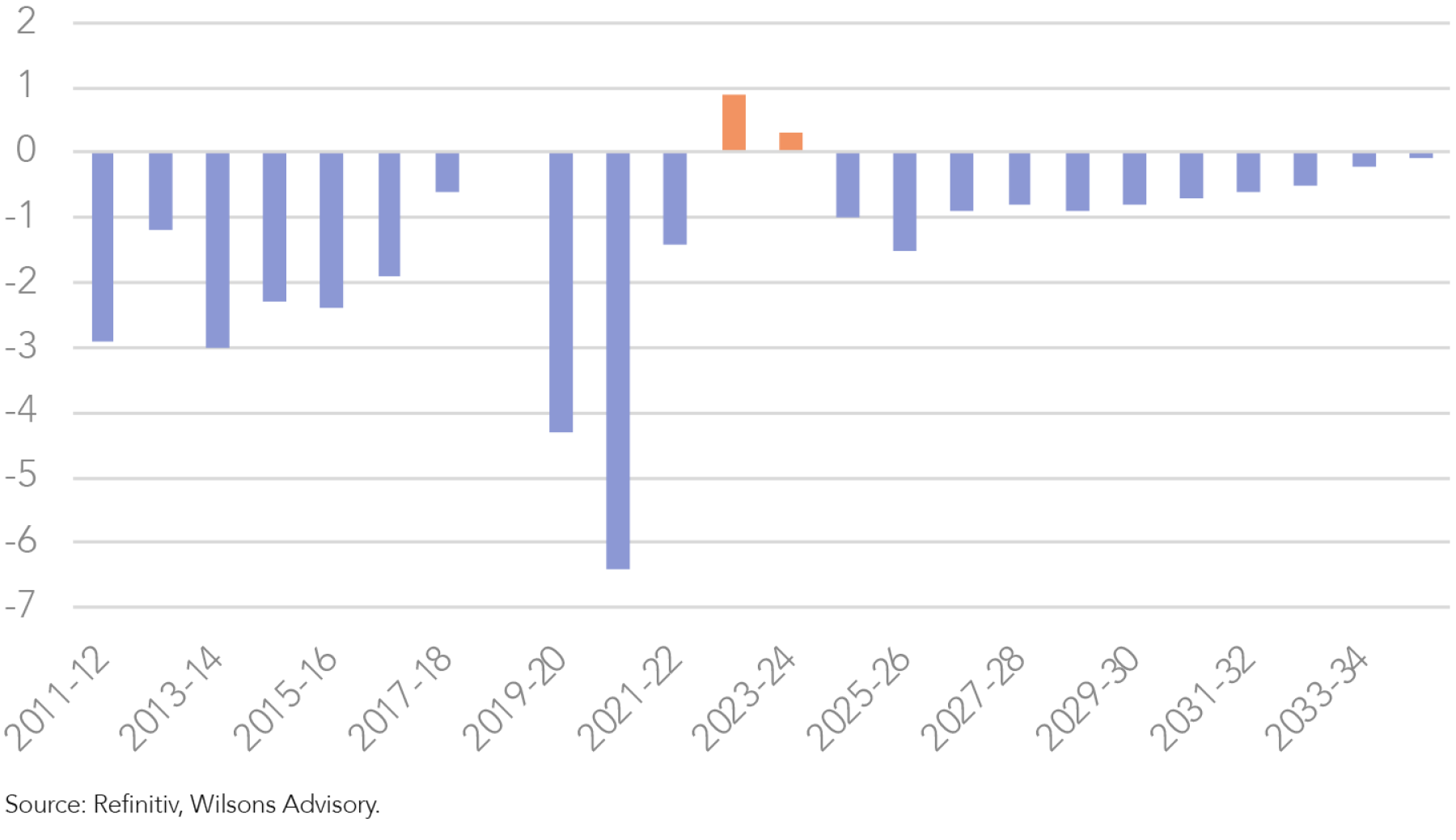
Cost of living relief delivers some inflation magic
Cost of living pressures are a focus and are being addressed by providing personal income tax cuts (modified Stage 3) and rebates on household essentials such as rent and electricity, and extending the instant asset write-off for small business. Interestingly, the budget forecasts inflation to slow to 3.5% at the end of FY24 and 2.75% by the end of FY25. This is well below the RBA’s forecast of 3.8% in FY24 and 3.2% in FY25. The difference can be mostly explained by the extension of the electricity rebate, which is expected to reduce inflation by 0.5% points. However, this is only a temporary measure (at least for now) and does nothing to address supply demand dynamics within energy markets.
The positive interpretation of the budget cost of living measures is that by reducing near-term headline inflation, it lessens the chance of high inflation expectations becoming embedded, and therefore reduces the risk of ongoing strong wage growth. The government also has the advantage of delivering this assistance at a time of subdued consumer demand. The government is clearly trying to be seen to be both helping with the cost of living and taking the pressure off interest rates. However, given the overall net stimulus in the budget we expect the markets and the RBA to remain sceptical of this claim.
Below trend growth expected
Can resilient commodity prices rescue the budget again?
GDP growth has been downgraded from 2.25% to 2.0% in FY25 vs the RBA’s forecast of 2.1%. In the past few budgets, the forecast of the terms of trade have been too conservative and the better than expected actual outcomes helped prop up the budget position, however the government’s luck may be about to run out.
Figure 3: Treasury is forecasting headline inflation to fall below 3% in FY25 in contrast to the RBA
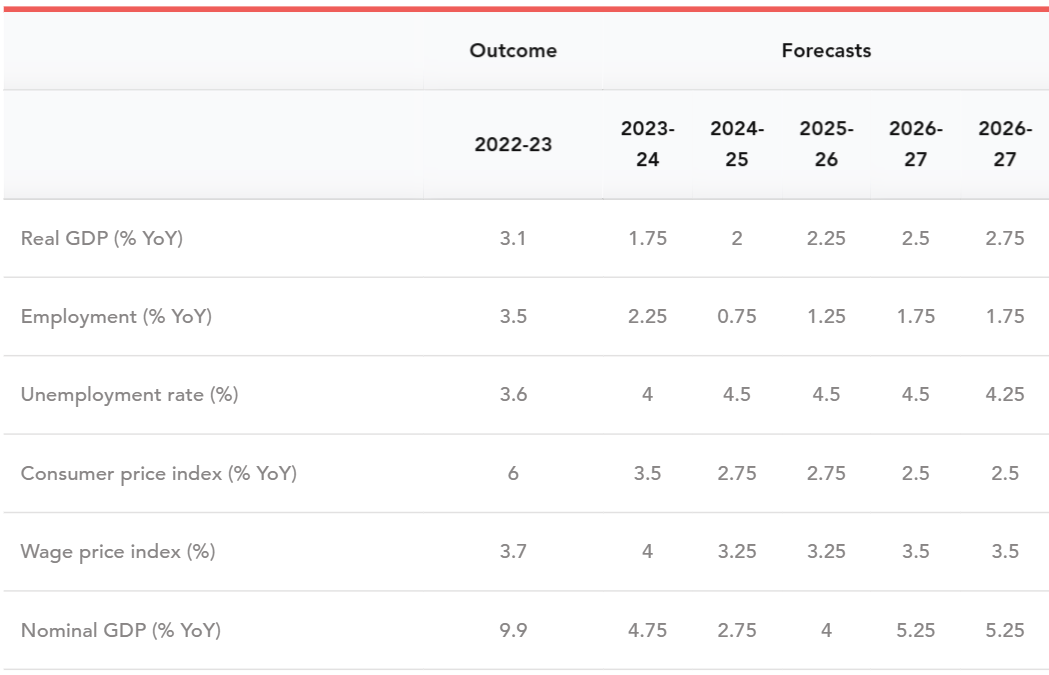
Source: Refinitiv, Wilsons Advisory.
Government running two sets of books?
Broader measures of the budget position show a materially larger deficit, than the quoted ‘cash balance’. Arguably a more accurate measure of the fiscal policy stance is the headline cash balance. This includes ‘off-balance sheet’ items, including ‘net cash flows from investments in financial assets for policy purposes’. The gap in the headline vs cash balance across the five years to 2027/28 is a worrying $81 billion worse. This gap between the quoted ‘cash budget’ position and the actual fiscal position continues to expand. Despite this worrying trend, Australia’s overall debt and deficit position remains low in a global context.
Figure 4: Australia's debt to GDP remain low in a global context
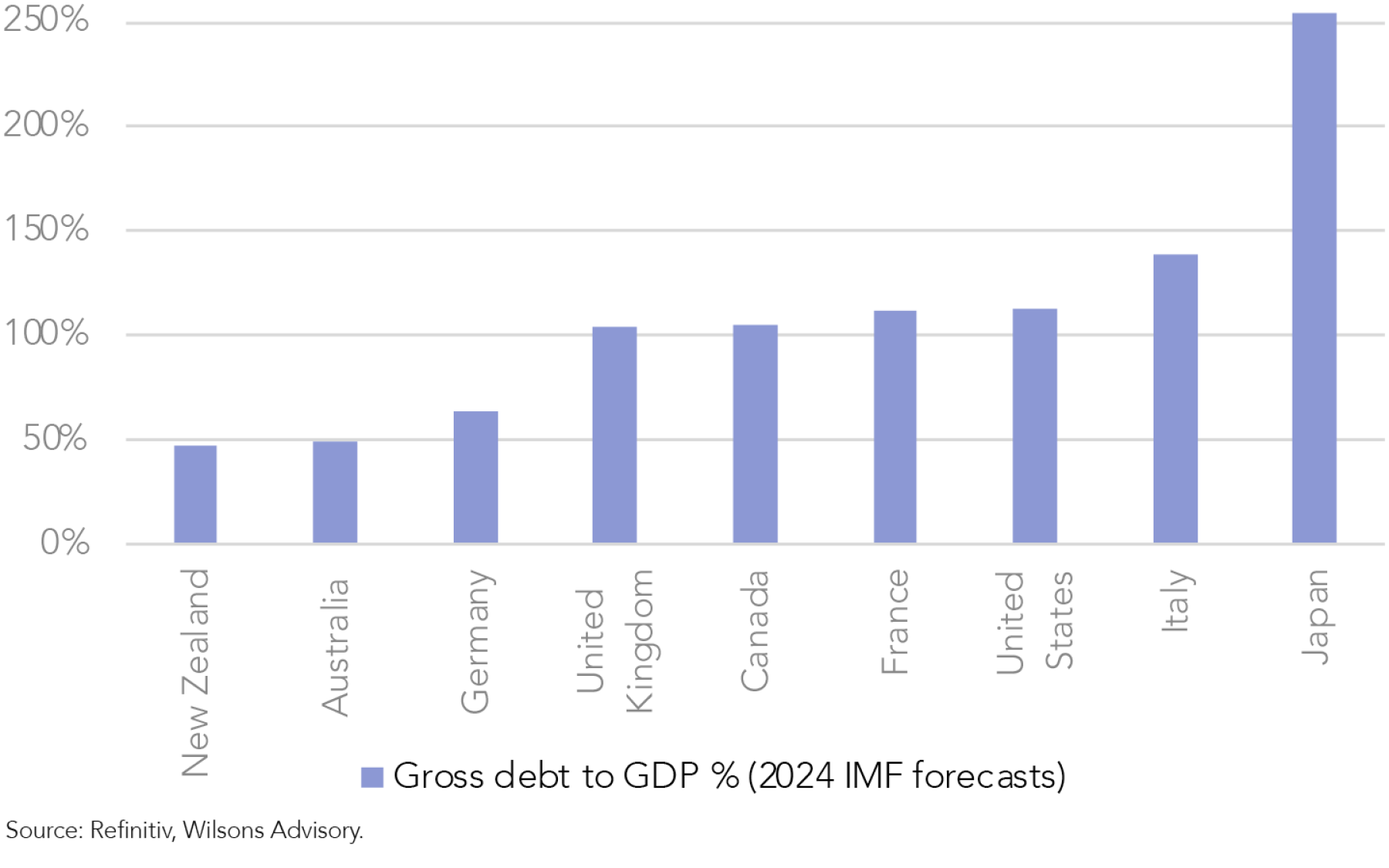
Figure 5: Fiscal balance 2024 (% of GDP)
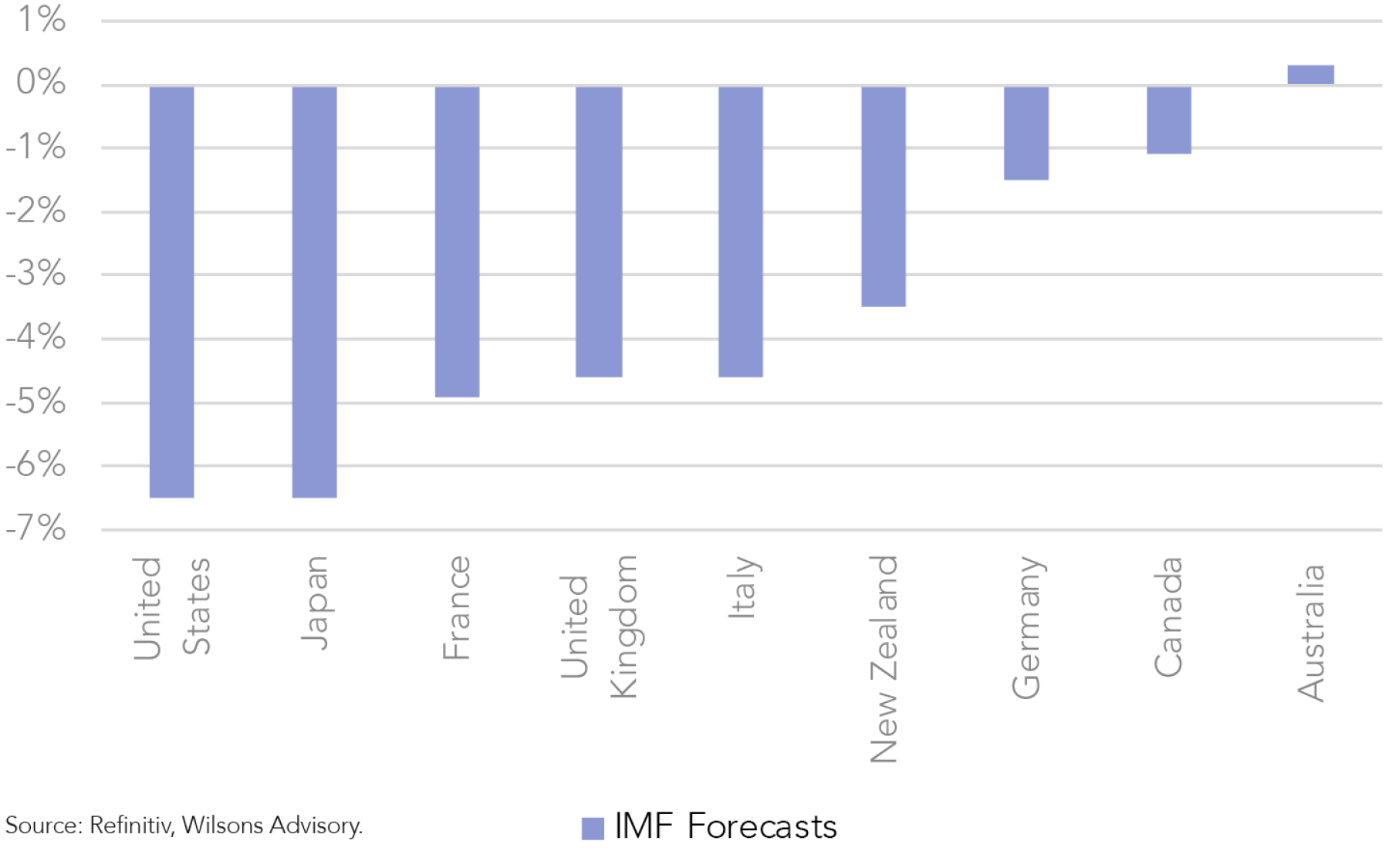
Key spending in the budget
The key short-term focus is on ‘cost-of-living’ with $8 billion of measures, including: $300 energy rebate for all households ($3.5 billion), 10% increase in rent assistance, and medicines co-payment frozen for one year (five years for pensioners and concession card holders).
There were incomplete details on the government’s ‘Future Made in Australia’ policy which will cost $22.7 billion but spread out over a decade (focused on critical minerals, hydrogen). This includes an announcement of a 10-year, $7 billion production incentive that will refund 10% of the processing and refining costs for Australia’s 31 critical minerals, including nickel, graphite, vanadium and lithium.
It appears this initiative is focused on ‘processing and refining’ i.e. incentivising the downstream, more so than the upstream (i.e. mining); to incentivise investment in further downstream value-added processing to export higher value critical minerals products, as compared to the majority of critical minerals exports today which are lower value intermediate products.
Supply of social and affordable housing to increase by around 55,000 homes through the National Housing Accord, the Housing Australia Future Fund, the Social Housing Accelerator Payment and other Housing Australia programs. $6.5 billion over five years from 2023/24.
Figure 6: The NDIS is expected to continue to grow much faster than the economy
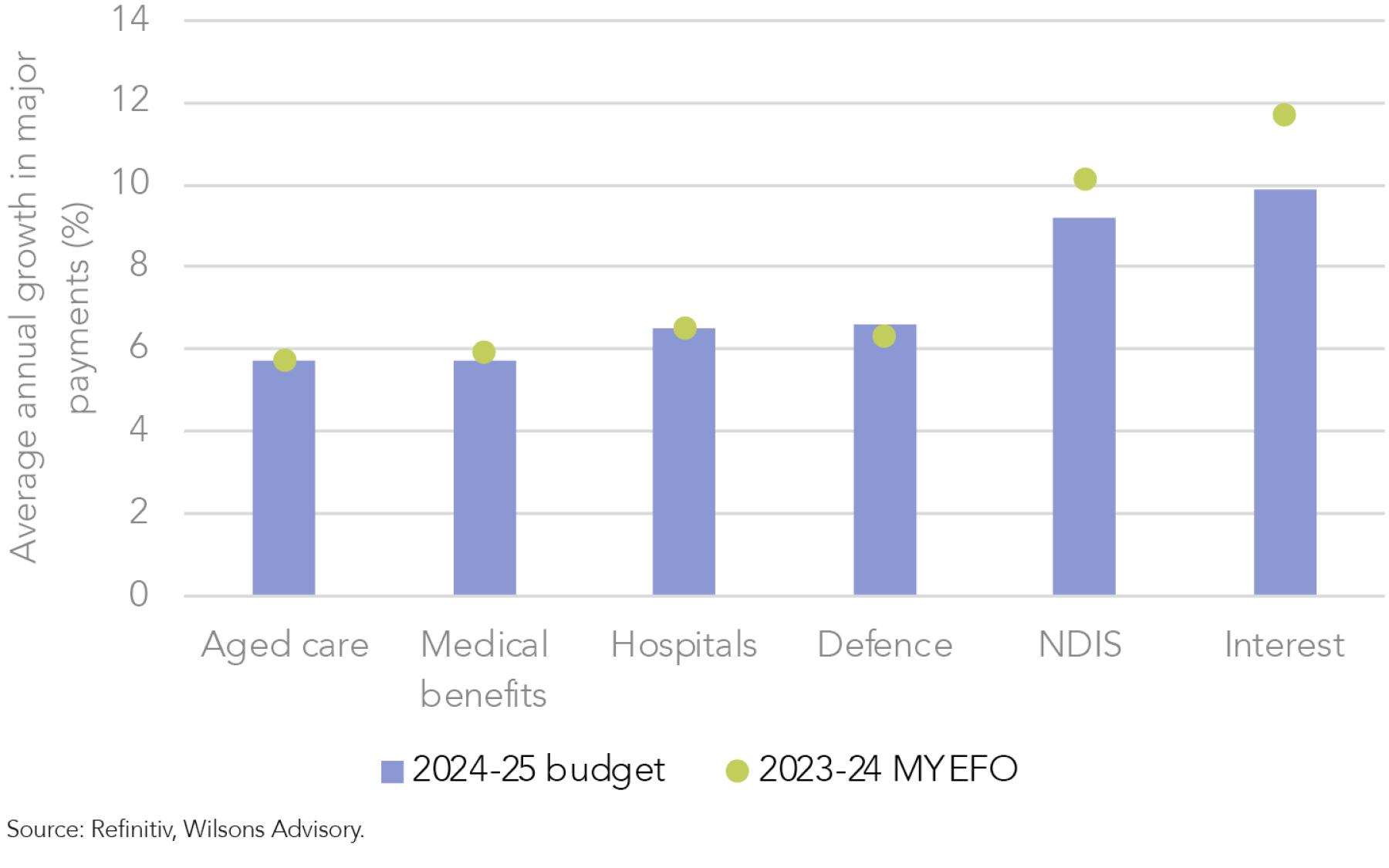
Not a near-term market mover but fiscal prudence looks to be out of fashion
Overall, the budget trends look more stimulatory for demand than previously and moderately inflationary despite the governments claimed inflation reduction efforts. We don’t expect huge near-term implications for markets but the structural implications of accelerating spending across a broad front are somewhat worrying.
Figure 7: Spending is forecast to pick up near term and remain stubbornly above pre-Covid levels
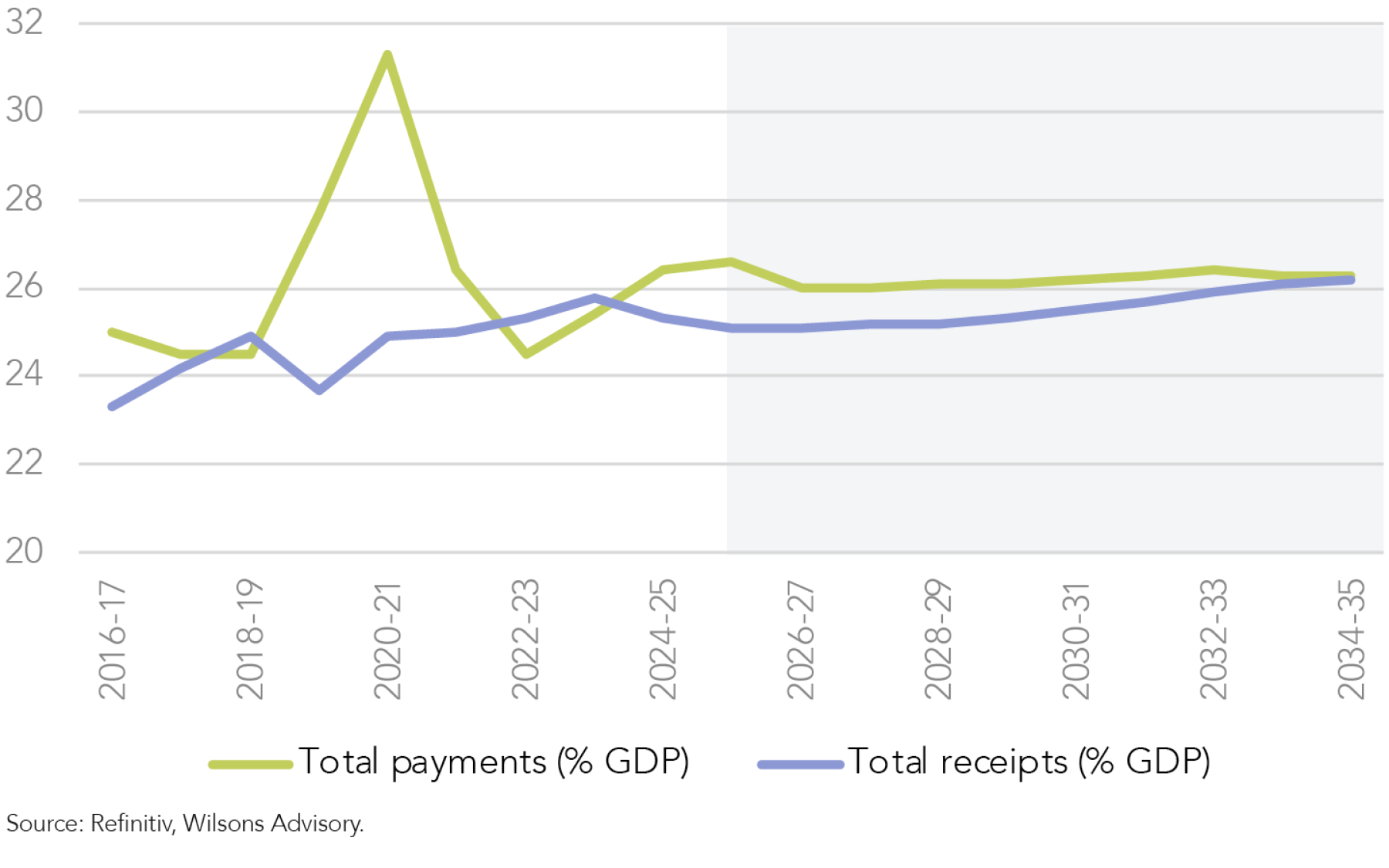
Strategic tax planning implications
In his third budget delivered from Parliament House in Canberra last night, Treasurer Jim Chalmers confirmed the revised “Stage 3” tax cuts but did not make any significant personal revenue announcements as he focuses on living costs.
Key announcements from this year’s budget include:
Personal
Stage 3 personal tax cuts
The new rates (as already legislated) commencing 1 July 2024 will be:

There will be no changes to the low income tax offset.
With the decrease in taxation rates, there may be opportunities to bring forward tax deductions into the current higher taxed financial year and deferring income to the lower taxed 2024/25 year. Savings of $4,529 will apply to those earning $190,000 or more.
Individual tax residency rules
No announcements were made in relation to the Board of Taxation’s recommendations to modernise the individual tax residency rules. The consultation process was finalised in September 2023. Under the Board’s proposed model, the primary test will be a simple ‘bright-line’ test. A person who is physically present in Australia for 183 days or more in any income year will be a resident.
Superannuation
There were no changes announced to the additional 15% tax applying to those with more than $3 million in super. We recommend against unnecessarily pulling out large amounts now and instead, waiting until 2025/26 when the legislation will commence. The calculation of the additional tax is based on the members balance at 30 June 2026. For couples with disproportionate balances, consider splitting concessional contributions with the low income partner. Other bespoke strategies to mitigate this tax depend on specific circumstances.
The budget confirmed the proposal to pay superannuation on Paid Parental Leave for births and adoptions on or after 1 July 2025.
No further details were released in relation to the government’s proposal to require all employers to pay their employees’ superannuation guarantee at the same time as their salary and wages from 1 July 2026. Currently, employers are required to make superannuation guarantee payments on a quarterly basis. The proposed change is a positive measure for employees as it provides increased security in terms of receiving contributions and their earlier investment. It will also help reduce the risk of inadvertent cap breaches. With more timely information being available to advisors it will be easier to plan for personal contributions to maximise the concessional contribution cap.
Compliance
The government will extend the ATO Personal Income Tax Compliance Program. This measure is estimated to increase receipts by $180.3 million through a combination of proactive, preventative and corrective activities. The ATO’s focus will include overclaiming of deductions and incorrect reporting of income.
We maintain that good tax governance and an independent review of our family groups will provide better tax outcomes and minimise resources required to successfully navigate an ATO review.
Business taxation
A temporary increase in the instant asset write-off to $20,000 for eligible small businesses will apply from 1 July 2024 to 30 June 2025 (i.e., businesses with an aggregated turnover of less than $10 million). The deduction is available in the income year in which the taxpayer first uses the asset, or first installs it ready for use, for a taxable purpose.
Foreign residents
For 2024/25 and later income years, the tax rates for foreign residents will be:
- $0 - $135,000 - 30%
- $135,001 - $190,000 - 37%
- $190,001+ - 45%
The government will amend the capital gains tax (CGT) rules to ensure foreign residents are taxed on direct and indirect sales of assets with a close economic connection to Australian land which is more consistent with the tax treatment that applies to Australian residents. The amendments will clarify and broaden the types of assets that will be subject to taxation. A new notification process will also improve oversight and compliance when foreign residents sell real property and self-assess their sale is not taxable real property.
Other measures
- HECS/HELP debts to be reduced by around $3 billion by amending the indexation factor to the lower of the Consumer Price Index (CPI) or the Wages Price Index (WPI). This change will apply retrospectively and reduces the 7.1% indexation applied on 1 June 2023 to 3.2%. Those holding a HECS/HELP debt should therefore consider prioritising the repayment of higher cost non-deductible debt ahead of their HECS/HELP debt.
- A one-off $300 electricity rebate for every household and $325 for small businesses will be given from 1 July 2024.
- The Medicare low income thresholds for 2023/24 will be increased as announced on 25 January 2024. The threshold for singles has been increased to $26,000, for couples with no children, the family income threshold to $43,846 (plus $4,027 for each dependent child or student), single seniors and pensioners to $41,089 and family seniors and pensioners to $57,198.
- The social security deeming rates will be frozen at their current levels for a further twelve months until 30 June 2025.
Learn more
Wilsons Advisory think differently and delves deeper to uncover a broad range of interesting investment opportunities for their clients. To read more of our latest research, visit our Research and Insights.
1 topic
